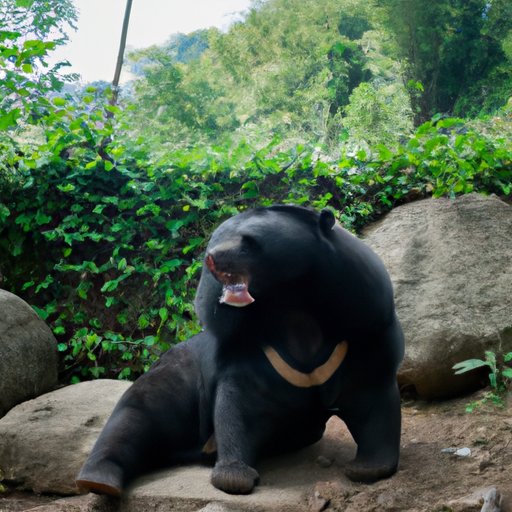Introduction
Understanding when and where bears are most active is important for anyone who may come into contact with them in the wild. This article will provide an overview of the natural behavior of bears, peak activity times, and how human activity can impact bear activity. With this information, readers can gain a better understanding of bear behavior and learn how to interact safely with them in the wild.
Natural Behavior of Bears – When and Where are Bears Most Active?
Bears can be found in many habitats around the world, including forests, mountains, tundra, and deserts. Depending on the species, they may migrate seasonally or stay in one area throughout the year. For example, grizzly bears typically migrate in search of food, while polar bears remain in their home range all year long.
Seasonal changes in weather and food availability can also influence bear activity. Bears tend to be more active during the summer months when there is an abundance of food available, such as salmon or berries. In the winter, bears enter a period of hibernation, during which they remain inactive in order to conserve energy.
How to Spot Bears in the Wild: Peak Activity Times
Knowing when and where to look for bears can help you avoid dangerous encounters. Bears are most active during the day, but the exact times can vary depending on the species and season. Black bears, for example, are most active at dawn and dusk, while grizzly bears tend to be more active during the middle of the day.
Bears are also nocturnal animals, meaning they are most active at night. During the summer months, black bears may remain active throughout the night in search of food. In the winter, however, they tend to sleep more and be less active during the dark hours.
Weather conditions can also affect bear activity. Bears often become more active when it’s warm and sunny, as they seek out food or mates. On rainy days, they may remain in their dens to keep dry and conserve energy.
Human-Bear Interactions – Understanding the Impact of People on Bear Activity
Interacting with bears in the wild can be dangerous, so it’s important to understand how human activity can affect bear behavior. Bears may become aggressive if they feel threatened or perceive humans as a potential source of food. To reduce the risk of a negative encounter, it’s important to be aware of your surroundings and make sure to leave no trace of food behind.
If you do come into contact with a bear, it’s best to remain calm and back away slowly. Make yourself appear larger by raising your arms or opening your jacket, and speak in a low, calm voice. If the bear does not retreat, it’s best to slowly move away and seek shelter in a safe place.
Conclusion
In conclusion, understanding when and where bears are most active is essential for anyone who may come into contact with them in the wild. Bears typically migrate seasonally or remain in their home range all year long, and their activity levels can vary depending on the time of day, season, and weather conditions. It’s also important to be aware of the impact of human activity on bear behavior, and take the necessary precautions to protect both yourself and the bear.
For more information about bear behavior and safety tips for interacting with bears, please visit the following resources:


